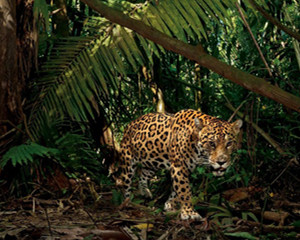Both the panther and the leopard are widely diffused through the tropical regions of the Old World, being natives of Africa, Persia, China, India, and many of the Indian islands; so that they have a much more extensive range than either the tiger or the lion. The manner in which they seize their prey, lurking near the sides of woods, and darting forward with a sudden spring, resembles that of the tiger; and the chase of the panther is said to be more dangerous than that of the lion, as it easily climbs the trees and pursues its enemy upon the branches.

When hunting the kangaroo, the native Australian rivals in energy and perseverance, in skill and keenness of eye, the Red Indian tracking the wild animals of the Brazilian forest. His glance roves from side to side, in a vigilant, uneasy manner. As soon as he sees a kangaroo, he checks his pace and stands immovable, like one transfixed; while his wives, who are at some distance behind him, fall to the ground as if they had been shot. Looking about a hundred yards to the right of the native, you will see a kangaroo erect upon its hind legs and supported by its tail; it is reared to its utmost height, so that its head is between five and six feet above the ground; its short fore-paws hang by its sides, its ears are pointed: it is listening as carefully as the native; and you see a little head peering out from the pouch, to inquire what has alarmed its mother. The native moves not: you cannot tell whether it is a human being or the charred trunk of a burned tree which is before you, and for several minutes the whole group preserve their relative position. At length the kangaroo becomes reassured, drops upon its forepaws, gives an awkward leap or two, and goes on feeding.












